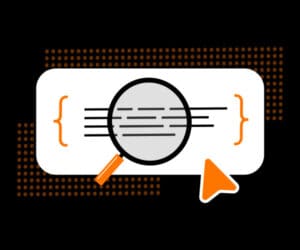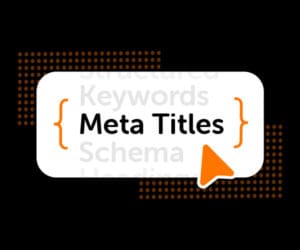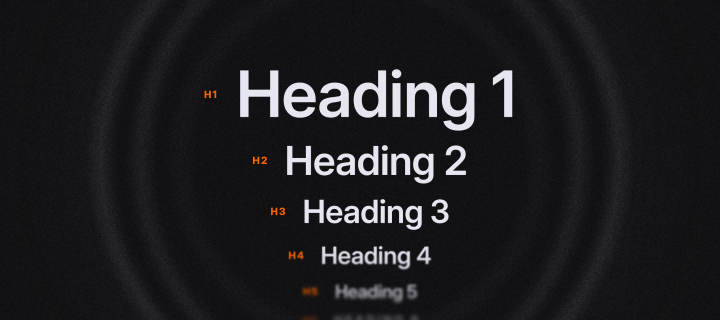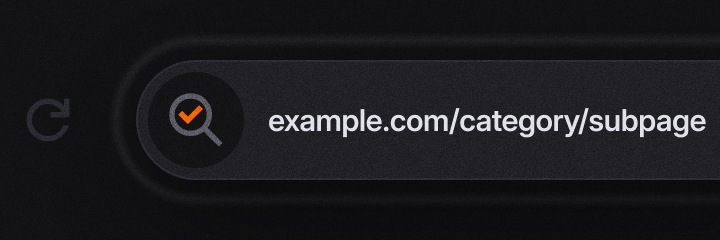On-Page Optimization: A Comprehensive Guide
On-page optimization is key to making your web pages rank higher on search engines and improving user experience. This guide will show you how to optimize elements like content, meta tags, and URLs to attract more traffic and provide a better experience for visitors.
Key Takeaways
- On-page SEO (Search Engine Optimization) is essential for improving website visibility by optimizing content, layout, and HTML structure to enhance both user experience and search engine rankings.
- Key elements of on-page SEO include title tags, meta descriptions, header tags, content quality, and mobile optimization, all of which play a crucial role in attracting and retaining users.
- Implementing advanced techniques such as structured data, featured snippets, and regular monitoring can significantly improve search engine rankings and overall site performance.

Understanding On-Page Optimization
On-page SEO refers to the practice of optimizing individual web pages to improve a website’s visibility and attract visitors from search engines. This involves making sure that the content, layout, and HTML tags on a page are structured in a way that both users and search engines can understand. The significance of on-page SEO lies in its dual ability to enhance search engine rankings and improve the overall user experience.
A well-optimized website not only draws more traffic but also ensures that visitors find what they are looking for quickly and efficiently. This optimization includes reducing load times, ensuring the page’s content is relevant and valuable, and placing important information where it can be easily accessed. These efforts collectively lead to better engagement and satisfaction, which are crucial for maintaining a strong online presence.
One of the main distinctions between on-page and off-page SEO is the focus on the page’s structure and content in on-page SEO, whereas off-page SEO refers to external factors like backlinks and social signals. On-page SEO encompasses various elements including keyword optimization, meta tags, and high-quality content, all of which are essential for making web pages more comprehensible to search engines and users alike.
The ultimate goal of on-page SEO is to create a seamless experience that aligns with user intent while also making it easier for search engines to crawl and index the site’s content. By focusing on people-first content, you can ensure that your website meets the needs of its audience, which is a practice highly recommended by Google. This comprehensive approach to on-page optimization is what sets the foundation for a successful SEO strategy.
Understanding Search Intent
Understanding search intent is at the heart of effective on-page seo. Search intent describes the underlying goal a user has when entering a query into a search engine. Recognizing this intent allows you to tailor your page seo elements such as title tags, meta descriptions, and content to better meet user expectations and improve your search rankings.
Key Elements of On-Page SEO
On-page optimization involves various on-page seo components that contribute to a webpage’s visibility and performance on search engine results pages. These elements include:
- Keywords
- Header tags
- Title tags
- Meta descriptions
- Images
- Internal links
- A user-friendly experience.
Each of these components plays a crucial role in ensuring that your Web page meets both the users’ needs and the technical requirements of other search engines.
Content Quality and Relevance
High-quality content is essential for effective on-page SEO; it should align with user search intent. Ensuring that your content is valuable, unique, and relevant can significantly improve your search engine rankings. One of the first steps in creating high-quality content is conducting thorough keyword research to identify what users are searching for. This involves selecting relevant keywords and topics that align with user intent. Incorporating related keywords alongside your primary target keywords helps improve search relevance and allows your content to cover a broader range of search queries.
Defining one topic per page allows you to provide detailed information about that specific subject, increasing your chances of ranking for a particular keyword. It’s also important to use your target keyword in the first 100-150 words of your blog post, as Google prioritizes keywords that appear early on the page. Additionally, considering the visitor’s search intent and the buyer’s journey during keyword research ensures that your content aligns with what users are looking for.
Keeping your content fresh and updated is crucial for maintaining its value for both users and search engines. Benefits include:
- Regularly adding new information and revising existing content improves its relevance.
- It signals to search engines that your page is up-to-date.
- Creating comprehensive and well-written content can help you rank for phrases not explicitly used in the text, as search engines understand the semantic context.
Using primary and semantic keywords throughout the page optimizes your content for specific search terms. However, it’s important to avoid keyword stuffing, which can negatively impact your rankings and user experience. Instead, focus on naturally incorporating relevant keywords and keyword usage into your content to enhance its keyword density and SEO effectiveness.

Title Tags and Meta Descriptions
Title tags are a critical aspect of on-page SEO, as they inform both visitors and search engines about the content of a page. A well-crafted title tag can significantly impact user behavior and their decision to click on your page. Maximize SEO effectiveness by ensuring title tags are concise, descriptive, and include primary keywords. The recommended character limit for title tags is under 60 characters to avoid truncation in search results.
Each page on your website should have a unique title tag that accurately describes its content. This not only helps search engines understand the relevance of your individual pages but also improves the user experience by providing clear and accurate information.
Meta descriptions, on the other hand, serve as summaries of a page’s content and play a crucial role in improving click-through rates. Pages with meta descriptions receive about 5.8% more clicks compared to those without, highlighting the importance of this element. Meta descriptions should:
- Accurately reflect the page content
- Encourage users to click
- Avoid repetitiveness
- Use relevant keywords to highlight search terms and improve visibility
- Be between 155-160 characters in length to ensure they are fully displayed in search results
Creating compelling meta descriptions involves crafting a clear and engaging summary of the page content that entices users to learn more. A good meta description can significantly improve your click-through rate, making it an essential component of your on-page SEO strategy.
Header Tags and Content Structure
Header tags play a vital role in organizing content for readers and indicating the importance of different sections to search engines. Using headings and subheadings helps users skim through content and assists search engines in understanding the page hierarchy. Proper use of header tags ensures that your content is logically structured, making it easier for both users and search engines to navigate.
Headings provide context about the content on the page, confirming its relevance according to Google’s search algorithms. Structuring content logically with headers not only enhances readability but also helps keep audiences engaged.

Best practice for using headers in SEO includes:
- Use a single H1 per page to ensure a clear structure.
- Include target keywords in the headers, particularly in H1 and H2 tags, to optimize for SEO.
- Avoid using the same keywords in headers as in the page title to improve semantic relevance.
Chunking content with headings helps maintain user engagement and facilitates easier navigation through the material. This organized approach ensures that your content is both user-friendly and optimized for search engines.
URL Structure
Having clear, descriptive page URLs is essential for on-page SEO. URLs should:
- Be simple
- Be informative
- Avoid random numbers or unnecessary text
- Incorporate a target keyword to help indicate to Google and users what the page is about, enhancing its visibility in search results.
Optimized URLs assist users in understanding what the page is about and improve search engine matching capabilities. This is particularly important as search engines use URLs to understand the context of the page’s content. A well-structured URL can make a significant difference in how your page is perceived by both users and search engines.
When creating URLs, ensure they are short, descriptive, and include relevant keywords for your own website. This not only improves SEO but also enhances the user experience by providing clear and concise information about the page’s content.

Advanced On-Page Optimization Techniques
Advanced on-page optimization techniques build upon the basics to further enhance your website’s visibility and performance. Utilizing tools like Semrush’s On-Page SEO Checker can streamline the optimization process by providing actionable insights. Regular SEO audits help identify issues such as duplicate content and keyword cannibalization before they impact performance.
Incorporating these advanced techniques and regular checks can significantly improve the effectiveness of your on site SEO strategies.
Featured Snippets
Featured snippets are a powerful way to increase the visibility and click-through rate (CTR) of your content. These snippets appear at the top of search results pages and provide a concise answer to the user’s query. Winning a featured snippet can significantly boost your website’s CTR, making it an essential goal for any SEO strategy.
To optimize for featured snippets, follow these steps:
- Provide clear and concise answers to common questions within your content.
- Use tools like Semrush’s Organic Research tool to identify search terms that trigger featured snippets.
- Target these keywords in your content.
- Utilize the Keyword Overview and SERP Analysis features to check if a keyword has a featured snippet.
- Tailor your content accordingly based on these insights.
By optimizing your content to specifically target keywords that already feature snippets, you can increase your chances of appearing in these coveted positions. This not only improves your visibility but also attracts more organic traffic to your website, enhancing your overall SEO efforts, especially when considering how search engine bots index your content.
Structured Data and Schema Markup
Structured data and schema markup are essential components of advanced on-page SEO. Structured data helps search engines better understand the information on your page, which can lead to enhanced search results like rich snippets, knowledge panels, and more. Schema markup, a specific form of structured data, is employed to achieve these rich snippets, which can significantly improve your click-through rates and visibility.
The benefits of using schema markup are manifold. Rich snippets, for example, provide additional information such as images, ratings, and reviews directly in the search results, making your listing more appealing to users. Implementing schema markup can also help search engines understand the context of your page’s content, potentially leading to more accurate and relevant search results.
Effectively implementing structured data involves:
- Ensuring your website contains specific information suitable for schema markup, such as product details, reviews, or event information.
- Using tools like the Schema Markup Validator to check if your schema is set up correctly.
- Using Site Audit tools to ensure that structured data is properly implemented across your web pages.
Incorporating structured content, such as lists or definitions, can improve your chances of appearing in featured snippets, further enhancing your search visibility. By leveraging structured data and schema markup, you can provide a richer user experience and boost your SEO efforts.
Page Speed Optimization
Page speed is a critical factor in both user experience and search engine rankings. A faster-loading page not only retains users but also helps achieve better search rankings. To effectively monitor and improve site speed, using tools like Google’s PageSpeed Insights is essential. This tool provides a speed score along with actionable tips for enhancing your page’s load times, considering on-page factors.
One effective technique for improving page speed is utilizing caching to store website elements temporarily, allowing for faster loading upon subsequent visits. Additionally, implementing a Content Delivery Network (CDN) can serve content from the nearest server to the visitor, significantly reducing load times.
Selecting a reliable web hosting provider is another crucial factor in page speed optimization. The quality of your hosting can directly influence how quickly your pages load, making it worth investing in a provider known for speed and reliability. By focusing on these aspects, you can ensure your pages load quickly, improving both user experience and SEO performance.
Optimizing images and using appropriate formats can also significantly enhance page loading speed. Ensure your images are compressed without losing quality and use responsive images to maintain fast load times across different devices. These efforts collectively contribute to a faster, more efficient website.
Technical Optimization
Technical optimization, while its own category of SEO, is also a foundational aspect of on-page seo that ensures your website is accessible, fast, and secure for both users and search engines. By addressing technical factors, you can significantly improve your page seo and boost your search rankings.
Internal Linking Strategies
Internal linking is a powerful on-page SEO strategy that enhances a website’s navigation and helps users find related content easily. Linking to other pages within your website is essential for improving SEO and strengthening your site structure. By strategically placing internal links, you can:
- Boost your site’s rankings
- Ensure that visitors spend more time on your site
- Reduce bounce rates by placing links towards the top of a page
- Increase the time users spend on your site
A good internal linking strategy involves:
- Linking from high-authority pages to important content to enhance the ranking potential of those pages.
- Using keyword-rich anchor text for internal links to signal to Google which keywords the linked page should rank for.
- Avoiding the use of duplicate anchor text for multiple pages to prevent confusion for search engines.
Regular audits of internal links help maintain an effective linking structure and improve SEO. Including internal links in older articles can revitalize their relevance and traffic, making them an integral part of your on site SEO strategy. Additionally, ensuring that users can find relevant links within three mouse clicks from the homepage enhances user experience and navigation.
By using varied anchor text and strategically placing internal links, you can improve the clarity and effectiveness of your internal linking strategy. This not only helps search engines crawl and index your site more effectively but also enhances the user experience by adding internal links and external links to make your content more accessible.

Optimizing Images for SEO
Optimizing images is a crucial aspect of on-page SEO that can significantly impact search rankings and user engagement. When adding images to a page, it’s essential to use descriptive file names and include informative, relevant image alt text to enhance SEO performance. The alt text helps search engines understand the content of the images and improves accessibility for screen reader users.
High-quality images can increase click-through rates from search results, making them a valuable asset for improving search visibility. Key aspects of image optimization include:
- Optimize images with alt tags to drive traffic from image search results.
- Using appropriate image formats.
- Ensuring images are compressed without losing quality to enhance page loading speed.
Embedding images using standard HTML image elements helps search engines find and process them more effectively. Providing context for search engines about the page’s content through image optimization is key to improving your overall SEO performance. Utilizing responsive images ensures that they display correctly across various devices, enhancing the user experience on both desktop and mobile platforms.
By focusing on these aspects of image optimization, you can enhance your website’s visibility, improve user engagement, and boost your search rankings. High-quality, optimized images are an essential component of a successful on-page SEO strategy.
Mobile Optimization
Mobile optimization is essential for improving search rankings and user experience, as Google favors mobile-optimized sites. With the increasing use of mobile devices for browsing, ensuring your website is mobile-friendly is crucial. Incorporating touch-friendly features and a mobile-friendly design can enhance user retention and reduce bounce rates on mobile sites. These features improve navigation and make it easier for users to interact with your site on smaller screens.
Implementing Accelerated Mobile Pages (AMP) and using responsive images are key strategies for significantly improving load times and adaptability on mobile devices. AMP provides a streamlined version of your web pages that loads quickly on mobile devices, enhancing the user experience and improving search rankings. Responsive images ensure that your visual content adjusts to different screen sizes, maintaining fast load times and a consistent user experience across all devices.
By focusing on mobile optimization, you can ensure that your website meets the needs of modern users and stays competitive in search rankings. This not only improves user satisfaction but also aligns with Google’s mobile-first indexing approach, making it a critical component of your on-page SEO strategy.
On-Page SEO and User Experience
On-page seo and user experience go hand in hand. A well-optimized website not only appeals to search engines but also provides a smooth, enjoyable experience for visitors. By focusing on key on-page seo elements, you can enhance usability, increase engagement, and ultimately improve your search rankings.
On-Page SEO Tools and Resources
Leveraging the right tools and resources can make your on-page seo efforts more effective and efficient. There are a variety of platforms available to help you analyze, monitor, and optimize your page seo elements for better search engine rankings.
- Google Search Console: This free tool from Google provides valuable insights into your website’s performance in search engine results. It helps you monitor keyword rankings, identify technical issues, and optimize your site’s structure and content.
- SEO Suites (Ahrefs, SEMrush, Moz): These comprehensive tools offer in-depth on-page seo audits, keyword research, backlink analysis, and competitor insights. They can help you uncover opportunities to improve your on-page seo elements and overall strategy.
- Online Resources: Blogs, tutorials, and guides from reputable SEO experts can keep you updated on the latest best practices and algorithm changes.
By regularly using these tools and resources, you can identify areas for improvement, track your progress, and stay ahead of the competition. Incorporating insights from platforms like Google Search Console and other SEO tools into your on-page seo strategy ensures your website remains optimized for both users and search engines.
On-Page SEO and Analytics
Integrating analytics into your on-page seo strategy is essential for measuring success and making data-driven decisions. By tracking key metrics, you can assess how your on-page seo efforts are impacting your website’s performance and search engine rankings.
- Google Analytics: This powerful tool provides detailed information about your website’s traffic, user behavior, and conversion rates. By analyzing metrics such as page views, bounce rates, and average session duration, you can gauge the effectiveness of your on-page seo elements.
- Keyword Rankings and Organic Traffic: Monitoring your keyword rankings and organic traffic helps you understand which pages are performing well and which need further optimization.
- Refining Your Strategy: Use analytics data to identify trends, uncover opportunities, and adjust your on-page seo strategy for continuous improvement.
By combining on-page seo with robust analytics, you can create a feedback loop that drives ongoing optimization. This approach ensures your website remains visible in search engine results, attracts more organic traffic, and achieves higher search rankings over time.
Monitoring and Adapting Your On-Page SEO
Good on-page optimization practices help maintain a website’s relevance over time, making regular monitoring and adaptation essential. SEO algorithms and user behavior change over time, so continuously evaluating your on-page SEO efforts allows for timely adjustments in response to these changes. Regularly tracking key SEO metrics ensures that your website remains optimized and competitive in search engine results.
Tools like Google Analytics can be used to measure the impact of on-page optimization. Monitoring keyword rankings and traffic analytics provides insights into your SEO performance and helps identify areas for improvement. Creating annotations when making significant on-page SEO changes helps track the impact of these changes and allows for better analysis and adaptation.
Identifying trends in search queries can help optimize content and improve user engagement. By monitoring mobile traffic analytics, you can gain insights into user behavior and site performance on mobile devices, ensuring that your mobile optimization efforts are effective. Staying ahead of trends and adapting to changes in user behavior and search algorithms is crucial for maintaining peak performance in on-page SEO and match search intent.
Regular evaluation and adaptation of your on-page SEO strategy ensure that your website remains relevant, competitive, and optimized for both search engines and users. This proactive approach helps you stay ahead of the competition and continuously improve your SEO efforts.
Summary
In conclusion, mastering on-page optimization is essential for achieving success in 2025. By focusing on key elements such as content quality, title tags, meta descriptions, header tags, and URL structure, you can significantly improve your website’s visibility and user engagement. Advanced techniques like featured snippets, structured data, and page speed optimization further enhance your SEO efforts, ensuring your website stays competitive in search rankings.
Monitoring and adapting your on-page SEO strategy is crucial for maintaining relevance and staying ahead of trends. By implementing the strategies outlined in this guide, and by linking to authoritative other sites and referencing reputable other websites, you can enhance your website’s credibility and SEO performance. Embrace these techniques and watch your online presence soar.
Frequently Asked Questions
What is an on-page optimization?
On-page optimization is essential for improving individual web pages through strategic optimization of content, title tags, meta descriptions, and internal linking to enhance search rankings. It significantly impacts user experience and search visibility by ensuring each page is properly structured and optimized for target keywords and user intent.
What is off-page and on-page optimization?
Off-page and on-page optimization are crucial complementary strategies that work together to improve your website’s search engine performance and authority. On-page optimization focuses on optimizing elements within your website like content and technical structure, while off-page optimization builds external authority through backlinks, social signals, and brand mentions.
What are the 4 types of SEO?
The four types of SEO are on-page SEO, off-page SEO, technical SEO, and local SEO. These are all unique and important components that work together to improve your website’s search engine performance and user experience.
Which of the following is an example of on-page optimization?
Examples of on-page optimization include optimizing title tags, meta descriptions, header tags, internal linking, and keyword placement within content to improve search engine rankings. These techniques are essential for helping search engines understand your page content and significantly impact your website’s visibility and click-through rates from search results.

